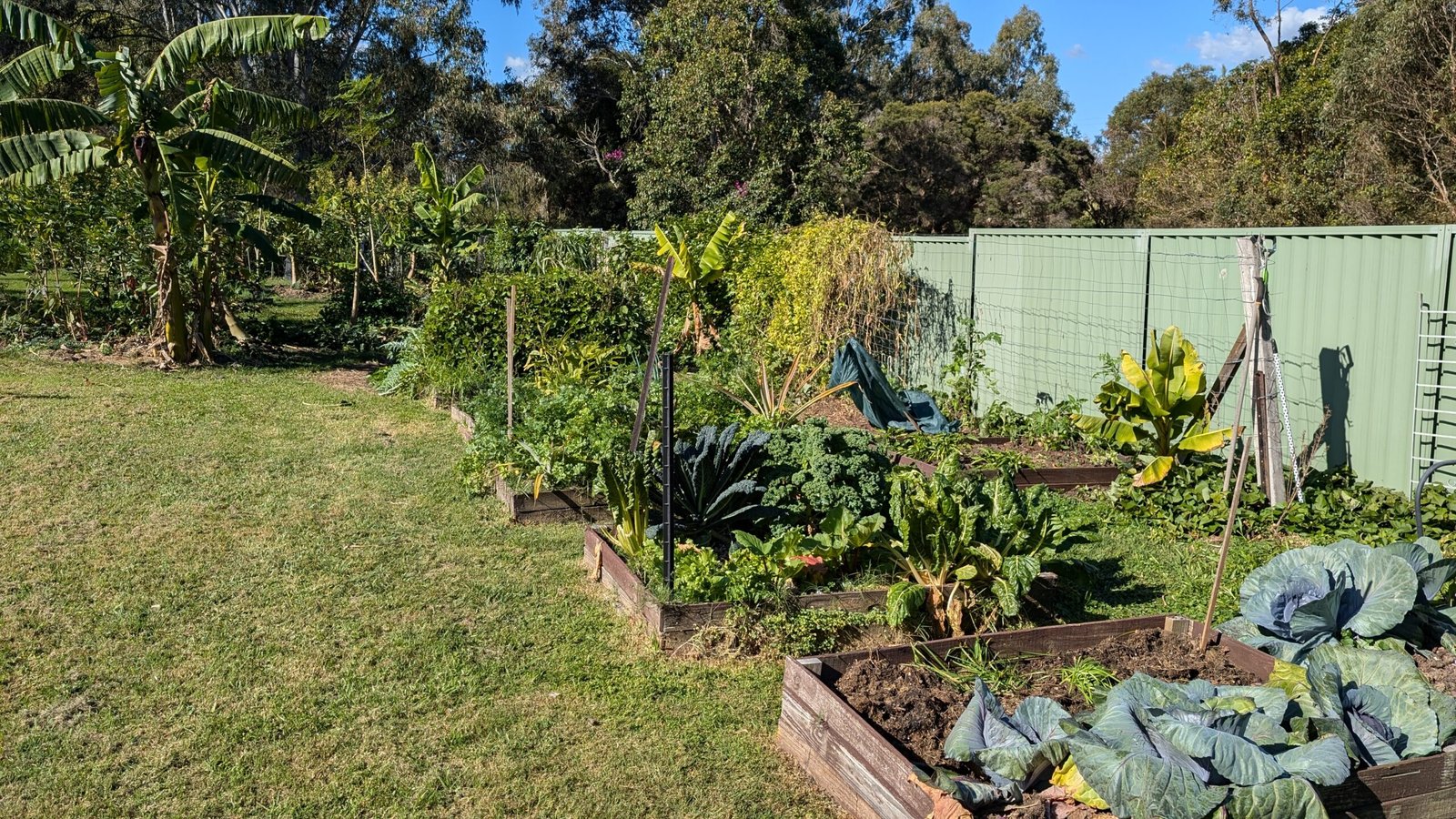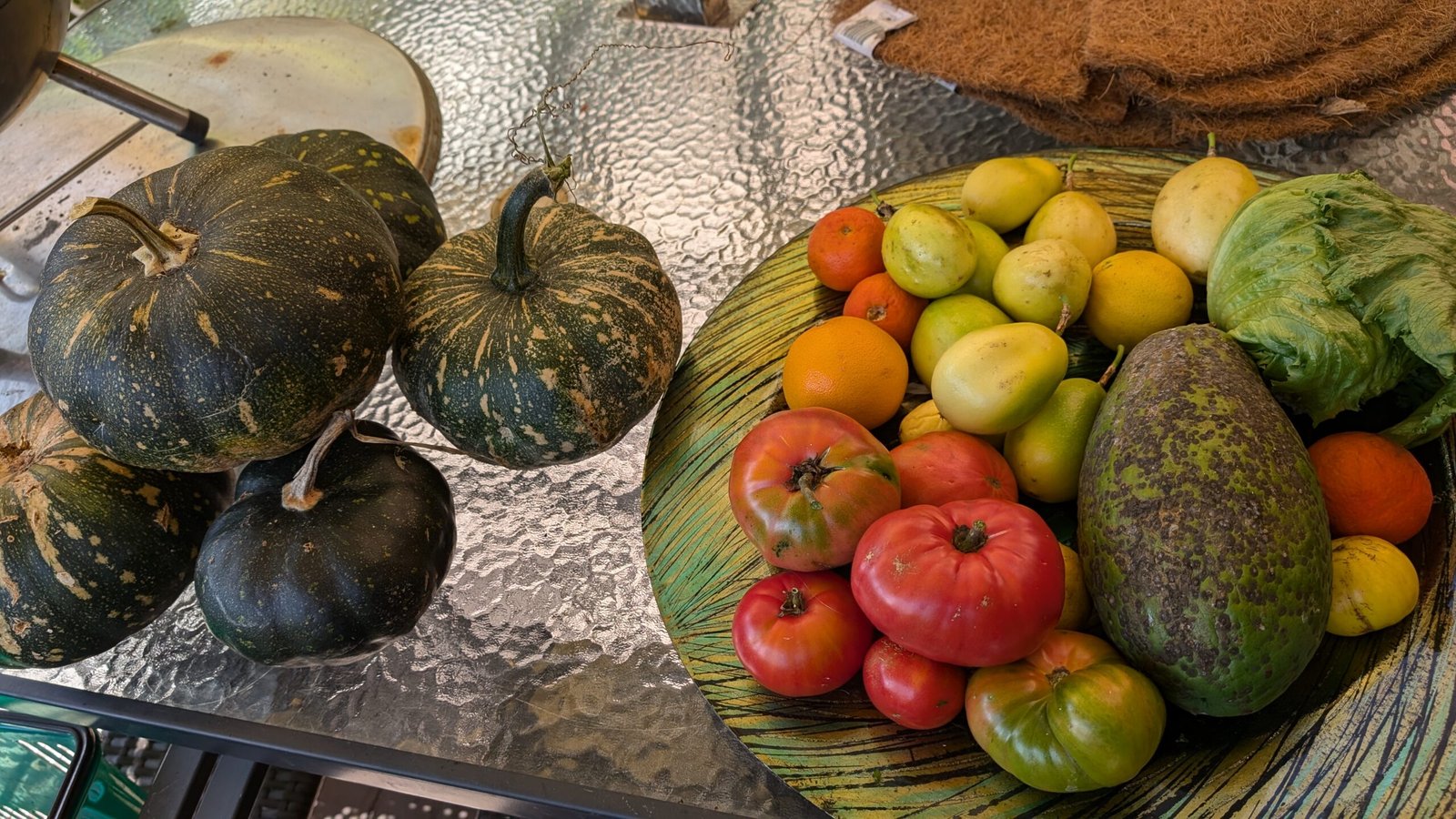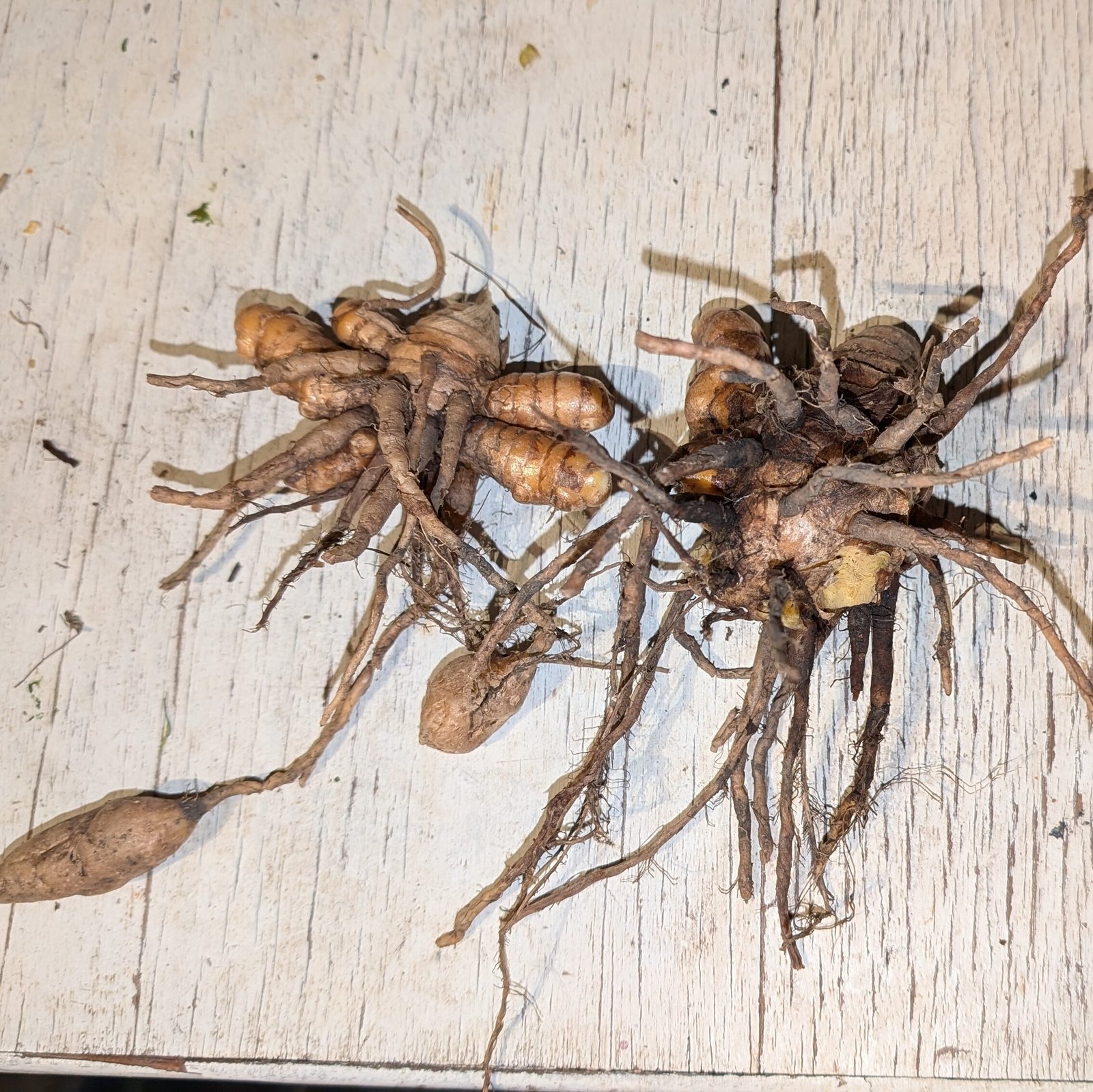Mid-winter in sub-tropical Brisbane is glorious. Warm and dry instead of hot and wet, our summer norm. European plants grow, the insect count is low and I am harvesting, feeding the soil and planting as Spring collides with late Autumn in mid-Winter. The air is a crisp 17 degrees at 7am and a warm sun beams onto the green, green garden from a bright blue sky. It will be warm and dry today.

I pick the last of the pumpkins and late tomatoes, dig the turmeric and ginger, turning up some early sweet potatoes by accident. Then I dig in the rotted grass clippings, garden and food waste ready to plant my spring vegetables. I am also harvesting cabbage, sliver beet, and coriander that I planted at the beginning of winter, that has basked in the sunny days, temperatures in the low twenties (seventies in Fahrenheit) and less humid weather.

I will be planting and harvesting greens until December when it is too hot and wet and everything rots and moulders in the ground. By February, even the corn will burn in the mid-summer sun and we cover the garden in mulch and lounge about the pool sipping on cool drinks in the early morning and late evening. It is so warm today, that I am watering and shading my new plantings, even though they are well established in pots, careful not to wet the leaves.
The focus of this post is the ginger and turmeric. That is the highest value crop and I am trialling new processes in powdering it for year long use.
Two years ago I detailed the process of digging up, cleaning and drying the tubers, but learned a lot from my mistakes. I wasted a lot of time and energy preparing and drying the tubers. Despite that effort they were still too leathery for the coffee grinder and I had to dry them three times. Then, last year’s crop was late into the ground, partly because I had not set aside enough root stock and I did not leave established plants in the ground to sprout naturally at their own pace, while I was busy with other things.

This year, I am leaving aside the monstrous looking mothers that do not lend themselves to grinding. I plan to disturb them as little as possible, leaving alone the roots and dangling tubers, that I assume provide water in dry times. My hope is that they sprout early and strongly as a result and I get big plants quickly. I have left almost a third of the crop in the ground for the same reason.

The other major difference is that instead of slicing the tubers with a kitchen knife, I will run them through the food processor, producing a more finely chopped based to go into the dryer. Again, I am using my fan forced oven on the lowest heat. That is well below 100 degrees C and does not cook the plant material at all. It is bigger than a dehydrator and easier to set up, but possibly less efficient. It certainly works well, I just leave it running overnight or longer, as required.
Overall, I expect to produce more powder with less effort and time, and have more root stock left over, including the plants I have left in the ground, so that I have a bigger crop next year. Future reports will reveal the success (or otherwise) of this approach.
